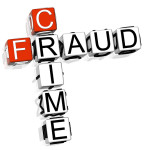Recognizing the difference between hard and soft fraud can aid in investigating fraudulent contents claims, according to two Property & Liability Resource Bureau national conference panelists who spoke recently on the subject.
Both Florida-based experts, Greg Nelson with UPC Insurance and Andy P. Rock, owner of the Rock Law Firm, said that Miami in particular, is a hotbed when it comes to new fraud trends.
According to the Federal Bureau of Investigation, insurance fraud totals more than $40 billion per year and costs U.S. families an estimated $400 and $700 per year. The federal agency’s data is supported by an industry fraud organization’s analysis of questionable claims during the three-year period from January 2010 through December 2012. During that time, the National Insurance Crime Bureau noted a 27 percent increase in referrals of questionable claims. California outranked all other states generating the most referrals (58,415) but Florida ranked second (29,086).
Rock explained that hard fraud involves complete fabrication of a claim, while soft fraud involves some inflation on a valid claim. For example, soft fraud can involve estimating age and cost of personal property as invaluable or damaged when not. Hard fraud, on the other hand, involves an insured or claimant claiming contents that were never actually owned. There’s also opportunistic fraud, like those that occurred after the recession. In that case, all lines of insurance saw a rise in claims.
The Insurance Information Institute which estimates that soft fraud costs insurers roughly $32 billion a year provides a state by state chart of laws against insurance fraud: http://www.iii.org/issue-update/insurance-fraud
Contents claims may involve hard or soft fraud. They outlined some possible indicators of contents claims fraud:
- A lot of family heirlooms.
- Contents for sale when loss occurred.
- Delayed reporting of incident.
- Claimed items beyond insured means.
- Questionable receipts.
- Insured has history of claims.
- Insured has financial problems.
Nelson explained that arson often leads to contents claims fraud. He offered the example of someone removing good furniture and staging other furniture in its place before a house fire.
Some ways to identify and defeat fraudulent content claims include getting an inventory completed as soon as possible and taking photos or requesting them from inventory vendors, as they can help in case of a dispute.
“Get an inventory right on the spot, within a couple of days of the claim,” Nelson said. He also recommended that adjusters do spot checks during a claim to see if items claimed are being sold on websites like Craigslist or Walletpop. A conference attendee offered an example of an organized crime ring using a public adjuster who turned in the same contents list of luxury items over and over with 10 different insureds.
They both recommended close examination of receipts to evaluate whether they list a real store, address and phone number. That’s because there are numerous websites offering fake receipts. Rock and Nelson provided several examples involving receipt fraud. One involved camera equipment that was reported stolen. The store where the camera equipment was allegedly purchased said they never sold that brand. Another example involved items purchased or manufactured after a loss. Yet another example involved fake receipts from a drycleaner. Further investigation revealed there hadn’t been a drycleaner at the address listed on the fake receipt in 15 years.
A good source of information is a neighborhood canvas, Rock said. In one case, a neighbor provided information about a house fire and how it started, burned out and then restarted again.
“You’ll be surprised at what some of these neighbors know,” Nelson added.
In addition, adjusters should consider canvassing nearby storage facilities. Rock said they often have surveillance cameras.
Both panelists recommended a number of tactics insurers can develop to combat fraud. These include:
- Developing a fraud management strategy;
- Taking a strong public stance against insurance fraud;
- Having clear fraud management goals in place with specific training objectives;
- Training personnel in fraud detection;
- Using predictive analytics;
- Establishing a dedicated fraud team.
Was this article valuable?
Here are more articles you may enjoy.

 Warren Buffett’s PacifiCorp Now Faces $30 Billion Fire Claim Demand
Warren Buffett’s PacifiCorp Now Faces $30 Billion Fire Claim Demand  Class Action Opposes Limiting Ship’s Liability for Baltimore Bridge Collapse
Class Action Opposes Limiting Ship’s Liability for Baltimore Bridge Collapse  ‘Fearless Girl’ Lawsuit by State Street Settles on Eve of Trial
‘Fearless Girl’ Lawsuit by State Street Settles on Eve of Trial  Beyond the Claim: How Social Canvassing is Transforming Insurance Fraud Detection
Beyond the Claim: How Social Canvassing is Transforming Insurance Fraud Detection 